Agnès Varda is a dizzying blur of dots – polka-dot trousers, polka-dot shirt, polka-dot socks, polka-dot scarf. “I’ve always loved polka dots. Ah, oui. It is a joyful shape, the polka dot. It is alive.” You could say the same of Varda. She is more joyously alive than anybody I have ever met.
The radical film-maker, grandmother of the Nouvelle Vague (she was only 30 when she was given that soubriquet – a compliment of sorts) recently marked her 90th birthday with a huge feast and a swim in the ocean. Her latest film, Faces Places, is released in the UK this week. It was nominated for a best documentary Oscar earlier this year, making her the oldest nominee in Academy history.
Faces Places is a joint enterprise with 35-year-old French photographer/artist JR. The pair travel around rural France in JR’s “magic” truck, which resembles a huge camera and doubles as a photo studio. They meet workers, talk to them about jobs that are fast changing or becoming obsolete, and celebrate their lives with huge portraits pasted on homes, walls, dockyards, rock faces and trains. In the film, Varda also revisits her own past and contemplates the future. It could easily be maudlin or depressing, but Faces Places is an exhilarating celebration of life.
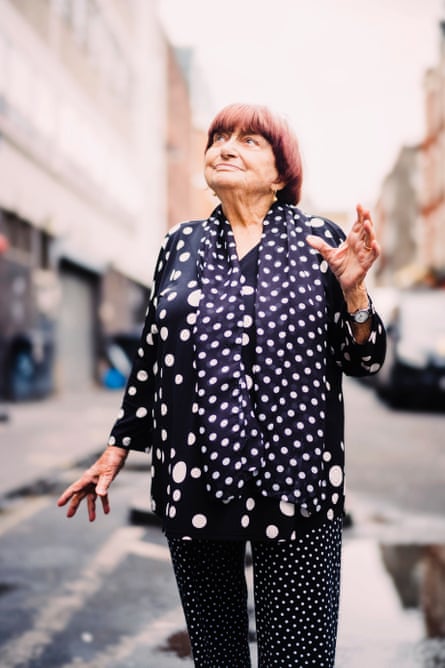
It is also a tender romance between Varda and JR. They start by admiring each other’s work, then grow to know each other, aggravate each other (she is frustrated by his refusal to take off his hat and sunglasses, he by her slowness), and love each other.
I meet Varda at a restaurant in Soho, London. In person she is tiny, with a two-tone haircut (white in the middle, aubergine on the outside) that makes her look like a punk monk. The corner of the room has been set up for the photographs but Varda suggests taking them outside and convinces the photographer that they will benefit from the natural light. There, she says, they will find the beauty.
Minutes later, she is back, talking about her relationship with JR. It works, she says, because he does not patronise her. “It’s not protecting the old age. I am still alive, I am still curious. I should not be treated like an old piece of rotting flesh!”
In the film, she talks about her failing eyes, and her difficulty walking, but finds amusement in her diminishing resources. She shows us what it is like to see as she does – huge blurry letters dance drunkenly across the screen. On one occasion, we see JR racing her in a wheelchair from picture to picture in an art gallery as she recites the names of the artists with reverence. It is impossible not to smile. JR photographs her toes and eyes and transfers the photographs on to a train. Varda found this touching. “It was his way of saying I am sending you to travel to places you will never see because you are too old to go everywhere.”
He asks her if she fears death. No, she says, she is looking forward to it “because then that will be that!” It is true, she tells me, but she is certainly going to make the most of what is left.
Varda was born in Belgium to a French mother and Greek father, and grew up in the tiny Mediterranean fishing town of Sète, southern France. She was christened Arlette, but legally changed her name to Agnès aged 18. She studied literature and psychology at the Sorbonne, then art history and photography. Varda began her working life as a photographer, but this did not satisfy her. “It was so silent. What is before and after the snapshot intrigues me.”
Her first film, La Pointe Courte, was released in 1955, filmed in Sète among the fishing community she grew up in. As she has done throughout her career, she merged fact and fiction. The cast largely consisted of real people doing their work alongside two professional actors (including the great Philippe Noiret making his film debut) as an unhappily married couple. La Pointe Courte came to be regarded as a precursor to the Nouvelle Vague.

In 1959, she met the director Jacques Demy and they fell in love. Both were determined to reshape the vocabulary of the movies. Demy did so by creating lush Technicolor musicals about regular working life in which every scrap of dialogue is sung. Half a century on, films such as The Umbrellas of Cherbourg still seem revolutionary.
As for Varda, she says she found it easy to break the rules of film-making because she never knew them in the first place. When she started making movies, she had only seen about 10 films in her life. So, in Cleo From 5 to 7 she tells the story of the eponymous Cleo, a dazzling pop star waiting for a potentially terminal diagnosis, in real time; Le Bonheur, about a carpenter who loves his wife but still wants more, is shot like an impressionist painting; Vagabond, a film about a young female drifter, starts with the death of the protagonist.
Her documentary The Gleaners And I is about those who pick up the grain left in fields by harvesters, and more generally those who live off scraps discarded by others. She has always seen herself as something of a gleaner. In her films she never wastes; she repackages her past, borrows from her heroes and makes merry with random moments. In Cleo from 5 to 7, we happen across a man belching up a tsunami of frogs from his stomach, and in The Beaches of Agnès, she zooms in on a naked man in a parade with a stonking erection – unforgettable images, simply included for the joy of them. Her films are fabulously French: experimental (like Godard), memory fixated (like Marker and Resnais), philosophical (like all three).
But what makes her different is that at the heart of everything is the quiet, unobtrusive focus on women – whether it is the female taxi driver in Cleo (highly unusual back then), feminism and abortion rights in One Sings, The Other Doesn’t, or herself in The Beaches of Agnès.
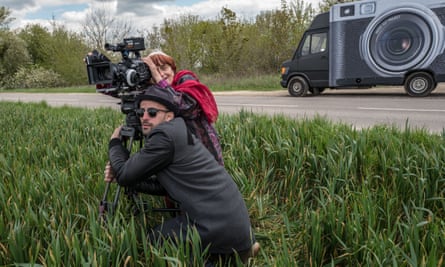
Varda was the solitary woman director in the Nouvelle Vague. Was she treated differently? “No, I don’t think so. I didn’t see myself as a woman doing film but as a radical film-maker who was a woman. Slightly different.” I tell her I couldn’t imagine any of her films being made by men. She smiles. “I am glad. I am a woman. I think I have the spirit, the intelligence and dare I say the soul of a woman.”
In the 1980s, she and Demy went out to Hollywood to try their luck. Demy made one critical and commercial failure, and Varda didn’t even get that far. When a Hollywood producer pinched her cheek, she reacted – and that was that. She still seems every bit as offended as she was all those years ago. “It was disgusting to do this to me. I slapped him. But he deserved it.” Did that destroy her Hollywood career? “No, no, no. There were other reasons.”
Varda appears to have little time for the mainstream. Earlier this year, she sent a cardboard cutout of herself to the Oscar nominees’ lunch because she was otherwise engaged – at 89, it was her first nomination. And yet she has mingled with the famous or soon-to-be-famous throughout her career. In the late 60s, she and Demy spotted the potential of a young Harrison Ford in Hollywood, but studio bosses told him Ford wasn’t worth the risk because he was hopeless and had no future in the business. She was close friends with Jim Morrison of the Doors, casting him as an extra in her film Lions Love. She was one of only six people to attend his funeral in 1971. Around the same time, she contributed to the screenplay for Bernardo Bertolucci’s erotic drama Last Tango in Paris.
Varda and Demy, who was bisexual, separated for a while in the 80s. “We had trouble, but it was still a strong relationship. Even then we lived on opposite sides of the street. And then we got together again and felt the delight of rediscovering the other after a little break.”
In 1990, aged 59, Demy died of Aids-related complications. But it was only some time later that the cause of his death was revealed. “Aids was such a shame in society. He couldn’t face that. He didn’t want to discuss it. He thought he could hide it. And he took a lot of energy to hide it.”
They had two children – Rosalie and Mathieu. Rosalie (from a previous relationship and officially adopted by Demy) is a co-producer of Faces Places, and is accompanying her mother today. Varda looks at Rosalie as she talks about Demy’s death. “Rosalie and I would have loved him to make a declaration. To make a statement: ‘OK, I’ve got Aids and that’s it.’ But he couldn’t accept the idea that it could be said, and we respected his decision.”
Did she ever find love after Demy? “No. Not a man or woman or anything. I never approached anybody’s skin. I don’t know if it was a decision. It just happened like this. I used to say my ability to love a man was dead.”
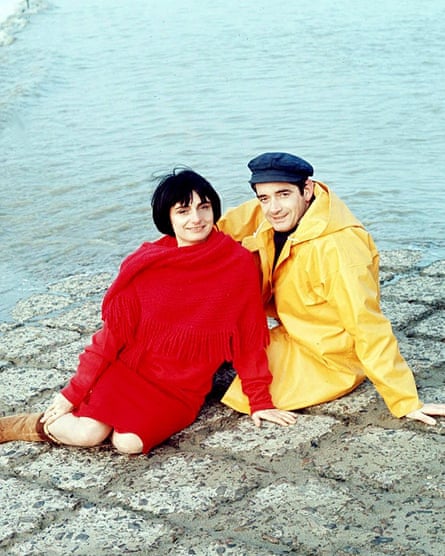
Varda made a movie about Demy’s early life in war-time France as he was dying. It was completed the week after his death. Jacquot de Nantes is still often shown in French schools and Varda is astonished by the profundity of the questions children ask about the film. “One child said: ‘How do you remember the memory of somebody else?’ And I said because I love him. And he said is that enough? And I said yes.”Like so much of her work, Varda’s new film is a two-fingered salute to the world’s obsession with celebrity. “There are so many images of famous people, and images of models who sell cosmetics and cars. I’m fed up with the famous people. I like to film and get the best out of normal people.” So she and JR make images of the last remaining resident in a street of miners, the postman who delivers apples to an elderly lady as well as the post, the one woman among 80 truck drivers on the docks. All have fascinating stories to tell.
The one concession it makes to fame is its references to Jean-Luc Godard. She and Demy holidayed with the legendary director and his first wife/muse Anna Karina, but it sounds like a cold friendship. She says in all the years she has known Godard she has never hugged him. In the film she takes JR on a surprise trip to visit Godard at his home in Switzerland, but she warns him that he can be unpredictable. Godard leaves a message saying he is not there; that he is at a restaurant they used to frequent with Demy. Varda is devastated because he is obviously at home and he seems to be taunting her with the reference to the restaurant where they spent many happy days. Varda calls him a dirty rat, and leaves him some cookies.
Why did he not open the door? “I will never know. His sister told me he said: ‘What would we have done, what conversation would we have had?’ He thought it would not be worth it. I think he was right. I would have said: ‘JR, this is Jean-Luc; Jean-Luc, this is JR.’ So what? No, it is true for the film it is better that he didn’t open.”
Next time she sees him, will she call him a rat or thank him? “Both. I think it’s contradictory, as always. He is a rat, and I’m glad he didn’t open. But at the time, I felt shocked and hurt.” In the end, she says she can forgive Godard anything because of his genius.
The word she returns to again and again is research, meaning experimentation, the desire to constantly do things differently. That, she says, is something she shares with Godard. “I remember after Cleo they proposed that I made another story about a singer being sick. After Le Bonheur they proposed I made another film about a threesome. Why would I make one film more if it’s the same? What would be the point?”
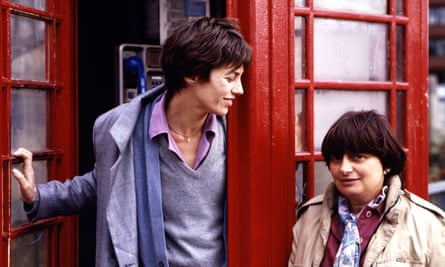
Nowadays, Varda is spending less time researching new ways of making cinema. Not because she hasn’t got the energy but because she believes she can do more groundbreaking work with art installations. In the end, she says, all art is about communication. And installations allow audiences to engage more intimately than traditional films do. Varda has made structures from 35mm prints of her old films and has turned her documentary, The Widows of Noirmoutier, into an installation where visitors put on headphones and choose which widow to spend time with. “I’m trying to move the relationship between people and art,” she says. “Art should ring a bell in your own life. You should get involved. I don’t want people to say it’s great, I want people to say: ‘It is for me.’”
We have been talking for two hours. You must be tired, I say. “No,” she says. “You must be tired of listening to me.” I ask if we can have a photograph together. Of course, she says. The publicist takes the picture on my phone. Varda looks at it, and says the light is too bright. The publicist takes another photo. Varda tells her we are too far away. And another. This time it is not bright enough. Eventually, Varda is happy with our snap. She quizzes me about my life, and repeats my children’s names as if revising them for an exam.
“Do you have an Instagram?” she asks as she prepares to leave. “I have one. I want to know everything about you, including the size of your shoes. Hehehe!” I tell her she is welcome to my shoes. “I have small feet. I am small. I was always small. But only physically.” She says she has lost two inches in recent years, but what is a couple of inches in the greater scheme of things? “We don’t need to be big to be in good shape. OK, allez. We maybe meet another time, who knows?” And Agnès Varda, that irresistible force of human nature, blows out of the room.
Faces Places is out on Friday. Agnès Varda: 3 moving images, 3 rhythms, 3 sounds is at the Liverpool Biennial until 28 October
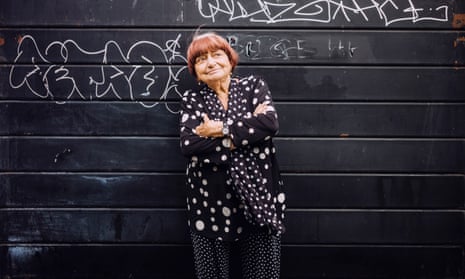
Comments (…)
Sign in or create your Guardian account to join the discussion